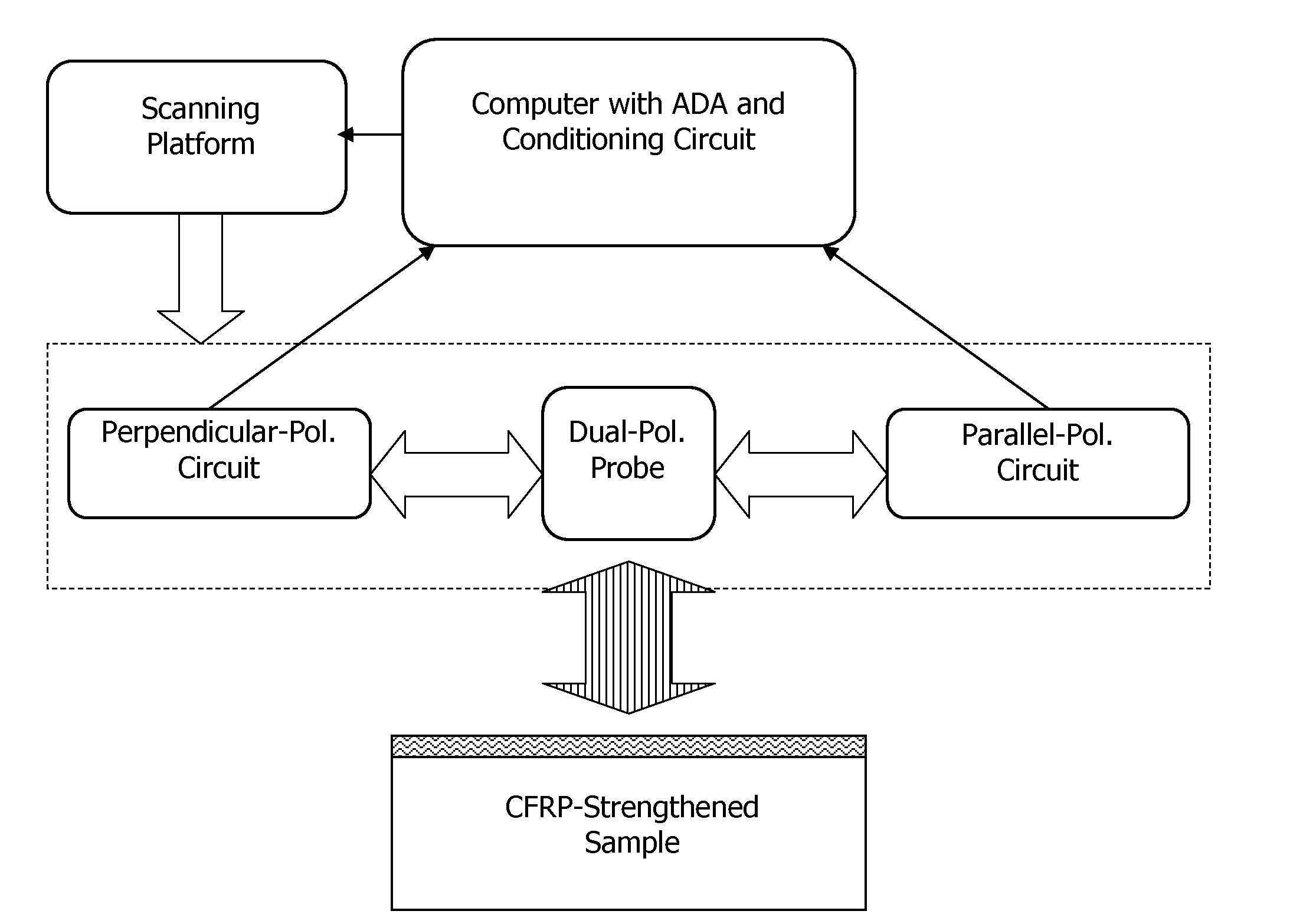Non-destructive testing of physical characteristics of composite structures
a composite structure and non-destructive testing technology, applied in the direction of resistance/resistance/impedence, measurement devices, instruments, etc., can solve the problems of ineffective non-destructive testing techniques for composite structures, interference with internal stress distribution and overall performance, and disbond between cfrp materials and concr
- Summary
- Abstract
- Description
- Claims
- Application Information
AI Technical Summary
Benefits of technology
Problems solved by technology
Method used
Image
Examples
example 1
[0044]CFRP laminates were adhered to several cement-based samples after curing using a manual lay-up method. During the lay-up process, several intentionally disbonded regions were produced in each sample. Specimen #1 was a 380 mm by 520 mm by 90 mm mortar slab adhered with a CFRP laminate. A 60 mm by 80 mm rectangular disbonded region was produced by inserting a thin sheet of foam between the CFRP laminate and the mortar substrate. Specimen #2 was a 380 mm by 520 mm by 78 mm mortar slab with several disbonded regions produced in it by injecting air between the CFRP laminate and the mortar substrate (i.e., creating a thin airgap between CFRP and mortar). The manufactured disbonds varied in size, geometry and thickness, and ranged in area from approximately a few to several squared centimeters. Some of the disbonds also bulged up a bit creating local surface roughness that when scanned would result in standoff distance variation around it.
[0045]Specimen #1 (380×520 mm surface) was mo...
example 2
[0047]In-field inspection and monitoring of CFRP-strengthened concrete members was conducted on an actual bridge. Disbonds were intentionally introduced into CFRP patches on a bent (transverse bridge member) and on an abutment. FIGS. 11a-c show the microwave images of a 260 mm by 360 mm scanned area of the bonded CFRP patch on the bent, and FIGS. 12a-c show microwave images of a 260 mm by 320 mm scanned area of the bonded CFRP patch on the abutment. The figures show a) perpendicular polarized images, b) parallel polarized images, and c) compensated images, respectively. The results show that the image 11a from the bent patch at perpendicular polarization is more non-uniform than the image 12a of the abutment patch. This is due to the fact that the disbonds produced in the bent were thinner than the disbonds produced in the abutment, and the influence of standoff distance variation was also relatively more significant. The dark indications in the perpendicular polarization image in F...
PUM
 Login to View More
Login to View More Abstract
Description
Claims
Application Information
 Login to View More
Login to View More - R&D
- Intellectual Property
- Life Sciences
- Materials
- Tech Scout
- Unparalleled Data Quality
- Higher Quality Content
- 60% Fewer Hallucinations
Browse by: Latest US Patents, China's latest patents, Technical Efficacy Thesaurus, Application Domain, Technology Topic, Popular Technical Reports.
© 2025 PatSnap. All rights reserved.Legal|Privacy policy|Modern Slavery Act Transparency Statement|Sitemap|About US| Contact US: help@patsnap.com



